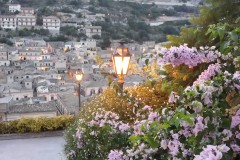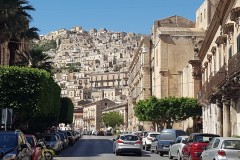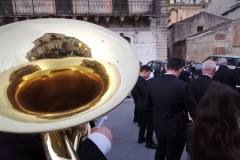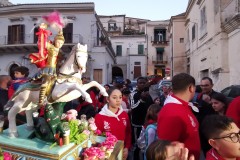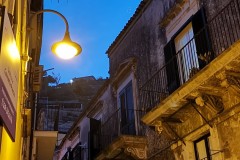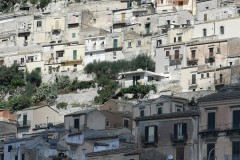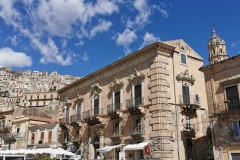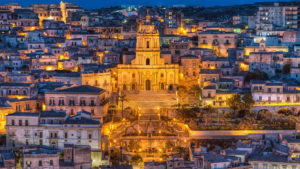Drivers beware! About 15km out of Ragusa, the SS115 passes over the 300m-high Guerrieri bridge. At this point you may well hear gasps of surprise from your passengers. It is nothing to be alarmed about, however. It’s just that they have caught their first glimpse of Modica, deep down below, nestling at the bottom of the gorge you’re driving over. If your plans hadn’t foreseen a visit, change them!
Modica, like the other towns in the Val di Noto, was badly damaged in the 1693 earthquake and largely rebuilt in Sicilian Baroque style. It is divided into two parts, “higher” Modica and “lower” Modica, which are connected by numerous flights of steps. Palazzi and houses rise from the bottom of the gorge seemingly stacked one on top of the other. Magnificent churches, with their inspiring domes, bell towers and intricate facades, punctuate the red-tiled roofs and one is struck by the uniform beauty of the whole.
The centrepiece is undoubtedly the beautiful Church of San Giorgio, though the “Castello dei Conti”, surveying the town from atop a rocky outcrop, is also very impressive.
Typical of so many Sicilian towns, Modica has a long and varied history, complete with the usually toing and froing of successions of invaders.
It came to real prominence in 1296, when Frederick II of Aragon (not to be confused with Frederick II “Stupor Mundi”) formed the “County of Modica”, a kind of “state within a state” that was initially governed by Mandfredi I Chiaramonte.
Its power base and administrative centre was in Modica, and other towns under the jurisdiction of the Conte di Modica included Scicli, Ispica, Ragusa, Chiaramonte Gulfi, Comiso, Giarratana, Monterosso Almo and Biscari. This special status was eventually revoked in 1812 and now the town is part of the Province of Ragusa.
Modica is custodian of a 400 year tradition of Sicilian chocolate-making. Being part of the Spanish kingdom for so many years meant that Sicily was often one of the first recipients of the new foodstuffs being brought back from South America. Cacao was one of these and today Modica still specialises in making granulous chocolate, often flavoured with chilli pepper, cinnamon or vanilla, that is based on Aztec methods and recipes. Chocolate shops abound and, for the real chocoholic, it is sometimes possible to watch the “chocolatiers” at work.
Just out of town, the beach at Marina di Modica is absolutely splendid and relatively quiet outside August.

